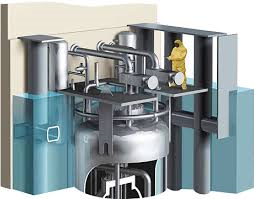
Breaking News
 "We Have To Respond With Force & Strength. We Have To Be Vicious, Just Like They Are":
"We Have To Respond With Force & Strength. We Have To Be Vicious, Just Like They Are":
 US Air Force's first official autonomous combat drone takes to the air
US Air Force's first official autonomous combat drone takes to the air
 Cracker Barrel suspends all restaurant remodels after disastrous rebrand controversy
Cracker Barrel suspends all restaurant remodels after disastrous rebrand controversy
 The moment Israel bombs Hamas leaders as they discuss Trump's Gaza ceasefire deal in Qatar:
The moment Israel bombs Hamas leaders as they discuss Trump's Gaza ceasefire deal in Qatar:
Top Tech News
 Methylene chloride (CH2Cl?) and acetone (C?H?O) create a powerful paint remover...
Methylene chloride (CH2Cl?) and acetone (C?H?O) create a powerful paint remover...
 Engineer Builds His Own X-Ray After Hospital Charges Him $69K
Engineer Builds His Own X-Ray After Hospital Charges Him $69K
 Researchers create 2D nanomaterials with up to nine metals for extreme conditions
Researchers create 2D nanomaterials with up to nine metals for extreme conditions
 The Evolution of Electric Motors: From Bulky to Lightweight, Efficient Powerhouses
The Evolution of Electric Motors: From Bulky to Lightweight, Efficient Powerhouses
 3D-Printing 'Glue Gun' Can Repair Bone Fractures During Surgery Filling-in the Gaps Around..
3D-Printing 'Glue Gun' Can Repair Bone Fractures During Surgery Filling-in the Gaps Around..
 Kevlar-like EV battery material dissolves after use to recycle itself
Kevlar-like EV battery material dissolves after use to recycle itself
 Laser connects plane and satellite in breakthrough air-to-space link
Laser connects plane and satellite in breakthrough air-to-space link
 Lucid Motors' World-Leading Electric Powertrain Breakdown with Emad Dlala and Eric Bach
Lucid Motors' World-Leading Electric Powertrain Breakdown with Emad Dlala and Eric Bach
 Murder, UFOs & Antigravity Tech -- What's Really Happening at Huntsville, Alabama's Space Po
Murder, UFOs & Antigravity Tech -- What's Really Happening at Huntsville, Alabama's Space Po
Rolls Royce has 450 MW modular nuclear reactor design

Still without a publicized name, Rolls-Royce's design is a pressurized water reactor in a close-coupled four-loop configuration. A team of about 150 people have been working on it for around two years. The first months were taken with major design decisions including the use of a light-water as coolant and moderator and to select the close-coupled arrangement of steam generators as opposed to integrating them into the reactor vessel, or adopting a more spread out design similar to today's large reactors. At 450 MWe the output is higher than other innovative designs, and actually outside the usual range considered to define the SMR market of up to 300 MWe.
They are trying to make a design that is cost competitive with natural gas.
Rolls-Royce believes its SMR design will:
• Provide 450 MW, depending on the configuration, that's the equivalent of up to 160 onshore wind turbines.
• Supply power to the grid in a timely manner at lower cost to the taxpayer and consumer, generating electricity that is at least as cheap (per MW) as power generated by today's large scale reactors – potentially even cheaper when SMRs go into volume production.
• Represent the lowest risk by using proven technology and best value by using a high degree of commercial or standardized off-the-shelf components.

 Tiny briefcase engine boosts EV range beyond battery power
Tiny briefcase engine boosts EV range beyond battery power 

